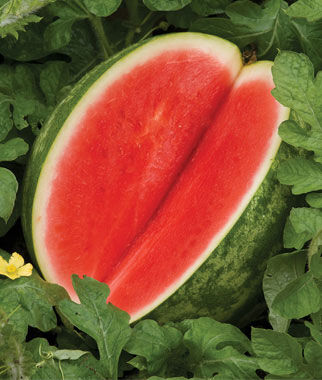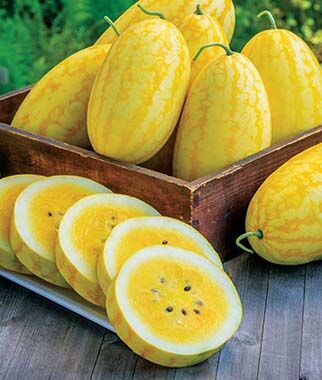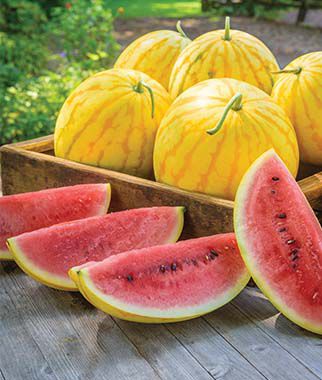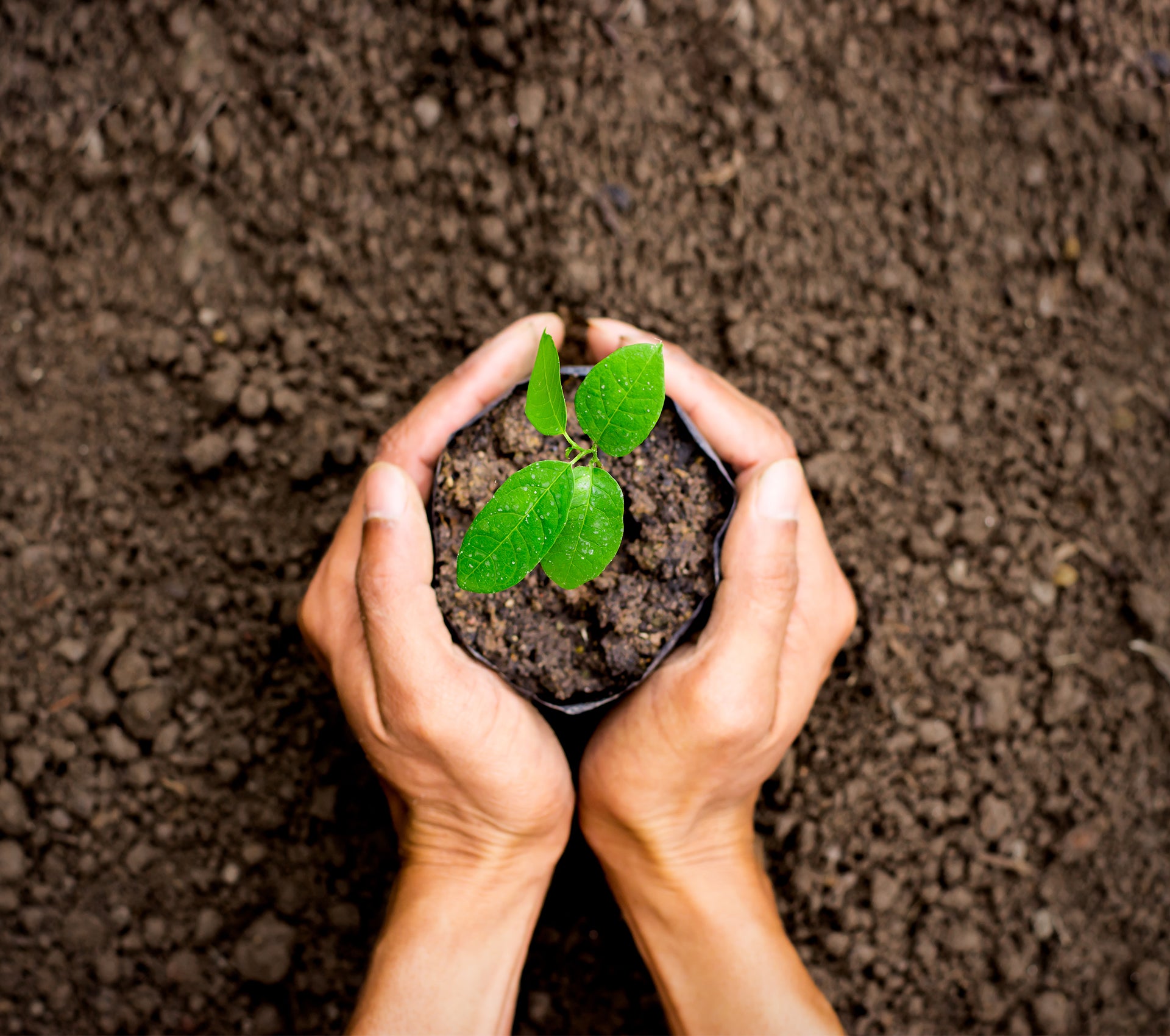Watermelon Sweetie Pie Hybrid
Seedsplant
75 days. This dark colored watermelon has a thin shiny rind that holds a sweet and juicy interior. Usually around 13 pounds, this sugar baby type has a dark red color inside with a sweet crunch. The timing is right for harvesting when this fruit has a hollow sound and a yellow bottom.
Sow direct when the soil is warm and all danger of frost is past. If planting in the garden, sow the seeds in raised hills or rows 3 inches high. Thin to 3 plants per hill 3 feet apart, or 1 plant per foot in rows. If planting in containers, sow several seeds in a raised hill at the center of the plant, thinning to one plant per pot. For earlier fruit, seeds may be started indoors.
Some gardeners, particularly those living in cold-winter climates, choose to plant their Melons through black plastic mulch, as it absorbs heat, warms the soil early, helps retain moisture, makes harvesting easier and cleaner, and aids in keeping away weeds, pests, and diseases. Melons are both thirsty and hungry, so be prepared to water well and provide plenty of nutrients. Give them a minimum of 1 inch of water a week -- 2 inches is better. Water in the morning, preferably with a drip irrigation system. About once a month, add several inches of compost to all root areas.Watermelons do well in humid or semi-arid areas, but foliar diseases are less likely to occur in drier climates. They also prefer sandy loam soil, but clay soils can be quite productive if raised planting rows are mulched with black plastic film. Female flowers are the only ones that develop Melons, so don't become upset if the first flowers you see are not setting fruit. The earliest flowers are male (pollen bearing), and they can't produce fruit. Make every effort to protect the bees during the flowering period, as honeybees are the most effective pollinators of Melons. If you don't have a lot of space to grow Melons, there are some varieties that can be grown in containers or up trellises. You will have to make sure you have a container that is large enough to handle the plants, and pick a Melon that isn't going to get so large that it will be too much, for either a container or a trellis. Harvesting your Melons at the peak of perfection takes some experience. For Watermelons, check the ground spot -- it will change from pale green or white to cream or yellow, and the tendrils near the stem will become dry and brown. You will also find the skin to be rough to the touch and resistant to penetration by your thumbnail. Other Melons tend to become fragrant when they're ripe. Sniff the skin, and if it smells like the flavor of that particular Melon, it is probably ready to be picked. Also, with many Melons, the stem will easily separate from the fruit when ripe. You can tell when your Cantaloupes are ripe by looking at the rind -- it will change from green to tan-yellow between the veins. Honeydew and other winter Melons will turn completely white or yellow when they're ripe, and the blossom end of the fruit will be slightly soft to the touch.Watermelon vines hate to be disturbed. Their leaves orient themselves to the sun, and if you move the vine and disturb the orientation, it can actually set the plant's development (and fruiting!) back a bit while the energy goes into slowly re-orienting the leaves to the sun.



























